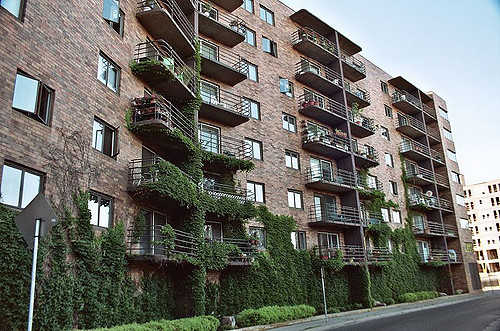
Preventive Maintenance Policy – It’s Not Too Late!
The state of Minnesota approved a new statute which requires community associations to prepare a Preventive Maintenance Policy by Jan. 1, 2019. If you haven’t completed this task yet, you should still get on it even though the date has passed.
We have seen a lot of conflicting advice and recommendations; hopefully this blog post will help.
First, which communities does this apply to? Any condominium or planned community (commonly referred to as a townhome) that is subject to 515B, also known as the Minnesota Common Interest Ownership Act (MCIOA). If you are a villa or single-family community you are most likely not subject to MCIOA, but you should verify in your Declaration to make sure. If you are managed by a management company, they may also be used as a resource to help find this information.
What needs to be included? Only the Common Elements and Limited Common Elements.
If you are a condominium this will likely include everything outside of the unit boundaries which will likely be the exterior walls of the interior of the unit. Your unit boundaries will be described in your Declaration.
If you are not a condominium, then you should review your plat map to see where the unit boundaries are located. We often see that communities make the mistake of including everything the association is responsible for maintaining. However, in most planned communities the association is responsible for maintaining the Common Elements PLUS certain portions of the units, such as roofs, siding, etc. You don’t need to report on those items – just the Common Elements.
This last item is a significant one, as we frequently see planned communities which don’t actually have any Common Elements – the lots extend to one another. In those situations, there is no obligation even to create a Preventive Maintenance Policy since there are no Common Elements.
How should you create the Preventive Maintenance Plan? After you have identified the components you need to maintain you can list how you are preventively maintaining that item. In many cases, you are already hiring this out – for example, the irrigation system or grounds maintenance. In others, your Reserve Plan is calling for periodic maintenance. Below are a few examples from Preventive Maintenance Plans we have created for our clients:
| ITEM: | DETAIL | FREQUENCY | HOW COMPLETED | |
| Shrubs | Trim shrubs twice per year to maintain adequate clearance from buildings, sidewalks, driveways and roadways | June and October | Included in grounds contract | |
| Irrigation System | Spring open-up, including meter installation, RPZ inspection (rebuilt every five years), and zone inspection; semimonthly zone inspections; fall winterization before ground freezes, including meter and RPZ removal and storage in heated, secure location. Zone inspections include check of all heads for proper rotation, coverage and run times. | May to October | Included in irrigation contract | |
| Pitched Roofs | Complete roof inspection, which includes the following activities: Check all pitched roofs/chimneys. Check vents for operation and sealants plus soffits and fasci. Check vents and louvers for birds, nests, squirrels and insects. Check flashings around roof stacks, vents and skylights for visible damage and failed caulk. Check for damaged, loose or missing shingles. | Every two years age 3-10; Annually older than 10 years | Roof contractor or certified home inspector |
What are we supposed to do with the plan once it’s done? You need to make it available to residents; the easiest way to do that is to post it on your website. There is no requirement to distribute the plan nor do you have to provide any sort of report to the homeowners about the plan unless required by your Declaration. You are also obligated to fund the plan in your operating budget.
(Photo credit: mnloftsandcondos via Flickr cc)
